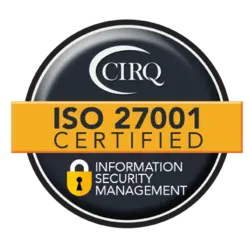Beyond Market Research: How to Build a Successful Innovation Culture
Innovation does not just happen, it has to become a continuous collaborative process across teams, business functions, and business networks that are a part of your culture
You might also like…
Closing the Creativity Gap in Research Technology: How AI Enhances Surveys, Diaries, and Interviews
Learn how AI can help boost the creativity of your research technology and earn you better responses. By: OvationMR Research Team Date: September...
Using AI in Qualitative Research: Best Practices, Tools, and Real-World Examples
There are many different market research conferences to pick and choose from in any given calendar month. What are the pros and cons of so many options?...
The Market Research Conference Circuit: Benefits & Challenges of a Crowded Calendar
There are many different market research conferences to pick and choose from in any given calendar month. What are the pros and cons of so many options?...
Introduction
A few months ago, we wrote a blog about using market research to support innovation (Read it Here). However, even the best market research program cannot result in successful innovation if the organization is unprepared for it. The key is to prepare your organization to receive customer insights and to use them to improve existing and develop new products and services. Like a seed planted in bad soil, market research planted into a non-receptive business will not produce anything.
Innovation does not happen in a vacuum or exclusively in R&D teams and innovation centers. It has to become a continuous collaborative process across teams, business functions, and business networks that are part of your culture.
After all, most great ideas for enhancing corporate growth come from the employees who regularly serve your customers and experience setbacks. Identifying ways to encourage these employees to become more outspoken is critical to nurturing your innovative culture. However, successful innovation is much more about being honest about the need to change and fostering a culture that embraces risk.
Here are 7 tips for building an innovation culture:
-
-
- Keep an external perspective. An external perspective means understanding what’s going on in the world outside of your organization. How is the business environment evolving? What’s happening across the social, economic, and financial landscape? How is that impacting your customers and is their behavior changing? Yes, market research should be a part of this process. But you should also look to business intelligence, competitive intelligence, and social media for insights.
- Include diverse perspectives. Assemble a team with diverse experiences and viewpoints. Bring together people from different parts of the business with various disciplines, backgrounds, and generations. This will help them generate ideas. Employees have an incredible potential to provide outstanding insights and ideas about organizational practices, customers, and broader business goals.
- Make time for thinking. Nobel Prize Winner Daniel Kahneman, in his book Thinking Fast and Slow, describes how behavior is determined by two systems in our mind – the conscious and the automatic – and how these two systems fight over how we behave. Automatic behavior occurs without awareness, is initiated without intention, continues without control, and operates efficiently or with little effort. We need to allow employees time for conscious thinking, which will yield more creative, high-potential ideas. Some firms select a weekday where meetings are prohibited and employees are encouraged to think about the business and explore the resulting ideas.
- Be action ready. The world is changing quickly and you must be ready to move. Many larger organizations with established hierarchies and bureaucracies struggle with acting quickly. And while they discuss and deliberate, their more nimble competitors and new entrants are taking the lead in the marketplace.
- Embrace change. Innovation requires change across multiple aspects of the organization. Sometimes, that change will be almost existential, including changes to the business model, processes, organizational structure, or supporting technology. That level of change can be threatening to people in the business. But you can’t be tentative and still succeed. You have to implement all the changes necessary to allow successful innovation. Leaders have a critical role in changing the culture to foster innovation. They must be open to changing themselves and supporting others to take risks and make mistakes. Leaders must also demonstrate the courage to push through the changes that drive successful innovation. This can also help convince employees to believe in the changes being made – and that the company will support their efforts.
- Hold innovation campaigns. Innovation campaigns periodically bring together individuals from across the organization to ideate about a specific challenge within a particular time frame. Innovation campaigns can capture hundreds of ideas to improve productivity, cut costs, and drive improvements from the bottom up quickly. In addition, idea campaigns help employees think by putting them into a different setting.
- Normalize failure. Not every idea leads to successful innovation. But in large corporations, employees may fear that failure (e.g., an idea that doesn’t go to market) can affect their career. All employees must understand that failure is not a stigma. Your culture must become a safe space for experimentation and encourage team members to learn from failure and to try again.
-
Wrapping Up
Once you have created a culture that supports innovation, market research insights – and other information – can have a much more immediate impact.
By using all of the resources available to the corporation and making everyone aware of their responsibility to support innovation for the future of the business, successful innovation should be part of the day-to-day operations and not something that happens by dumb luck.


Photo Credit: Robert Kneschke by License Adobe: #214910582
Follow
OvationMR

Jim Whaley
Author
Jim Whaley is a business leader, market research expert, and writer. He posts frequently on The Standard Ovation and other industry blogs.
OvationMR is a global provider of first-party data for those seeking solutions that require information for informed business decisions.
OvationMR is a leader in delivering insights and reliable results across a variety of industry sectors around the globe consistently for market research professionals and management consultants.

Need help with new insights?
We are ready to offer you:





